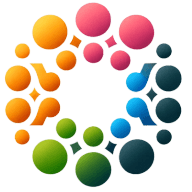4 Effective Erg Initiatives that Foster An Inclusive Workplace
Employee Resource Groups (ERGs) are powerful catalysts for creating inclusive workplaces. This article explores effective ERG initiatives that have made significant impacts across various organizations. Drawing from expert insights, it highlights how ERGs drive innovation, shape inclusive design, boost employee engagement, and spark change through storytelling.
- ERGs Drive Innovation and Business Strategy
- Disability ERG Shapes Inclusive Office Design
- Black Employee Network Boosts Engagement and Retention
- Asian ERG Sparks Change Through Storytelling
ERGs Drive Innovation and Business Strategy
When it comes to building truly inclusive workplaces, Employee Resource Groups (ERGs) are absolute game-changers—but only when organizations give them the support they need. Merely grouping people with commonalities and no real budget together and labeling them an ERG is little more than a social club.
These employee-led communities thrive when they have executive champions, dedicated funding, and clear connections to both qualitative and quantitative business goals.
When properly funded and supported, ERGs actively shape company culture through mentoring, professional development, and impacting policies that address the unique challenges faced by underrepresented groups, including employees with disabilities. Take Microsoft's Disability ERG, for example. They partnered with product teams to create the Xbox Adaptive Controller—a brilliant innovation designed with input from employees with disabilities and accessibility experts. This controller features customizable buttons and ports that work with various assistive devices. Not only did it become a commercial success, but it also established Microsoft as a leader in accessible tech. That's the power of ERGs in action!
Companies that integrate ERGs into their business strategy see real results in hiring, retention, and employee engagement. Forward-thinking organizations like Salesforce and IBM have expanded their ERGs' influence by involving them in recruitment, reviewing marketing materials for inclusivity, and gathering feedback on product accessibility. The most successful ERGs create a sense of community while simultaneously serving as valuable business resources. They connect diverse perspectives to workplace policies, market opportunities, and product development—ultimately building more adaptive, innovative organizations.
In essence, ERGs represent that sweet spot where inclusion meets business strategy. As Microsoft's Xbox Adaptive Controller shows, these communities can transform organizational culture while driving meaningful innovation and market growth. By elevating ERGs from social networks to strategic business partners, companies create more equitable workplaces and gain competitive advantages through diverse perspectives that enhance products, customer experiences, and talent acquisition.

Disability ERG Shapes Inclusive Office Design
ERGs are an effective conduit to capture diverse employee voices, informing internal and external organizational programs. A client of mine engaged members of their Disability ERG to inform the development of a more accessible and accommodating design for their new office building. The ERG's inputs informed the inclusion of braille on critical signage, advocacy for accessible, gender-neutral washrooms, and creation of sensory-friendly spaces for all staff to access. The ERG's input ensured that a critical company project incorporated inclusive elements that benefitted all employees, not just members of the respective ERG.

Black Employee Network Boosts Engagement and Retention
Employee Resource Groups (ERGs) have become a key tool for companies looking to build a more inclusive and diverse work environment. These groups give employees the chance to connect over shared experiences or identities, such as race, gender, or professional interests. In doing so, ERGs create a space where employees can truly feel supported and heard. I've seen companies use ERGs not only to help employees form valuable connections but also to gather insights that shape company policies and practices. A great example is the Black Employee Network at a tech company I know. It wasn't just about socializing--this ERG was all about growth. They hosted mentorship sessions, brought in senior leaders for conversations, and worked on boosting Black representation in leadership positions. The results spoke for themselves--employees felt more engaged, and the company saw a significant retention boost. When companies give ERGs the space and resources they need, they do more than just tick diversity boxes; they create a real culture of belonging that benefits everyone.

Asian ERG Sparks Change Through Storytelling
Companies can use ERGs as a powerful tool to create real inclusion—not just checkbox diversity. However, it only works if they treat ERGs as more than a side project. These groups need to be given resources, visibility, and support from leadership. When done right, ERGs create safe spaces for employees to show up as their full selves, build community, and spark conversations that lead to meaningful change.
One initiative that really stood out to me was an Asian ERG that hosted a storytelling series where employees shared personal experiences about identity, culture, and career challenges. It wasn't just a panel—it was raw, real, and gave people the chance to connect beyond their job titles. Leadership attended, listened, and followed up with actions—like mentorship opportunities and more inclusive policies. That's what made it effective: the voices were heard and valued.
At the end of the day, ERGs work best when companies listen, invest, and act. It's not just about creating space—it's about amplifying the voices inside it.


